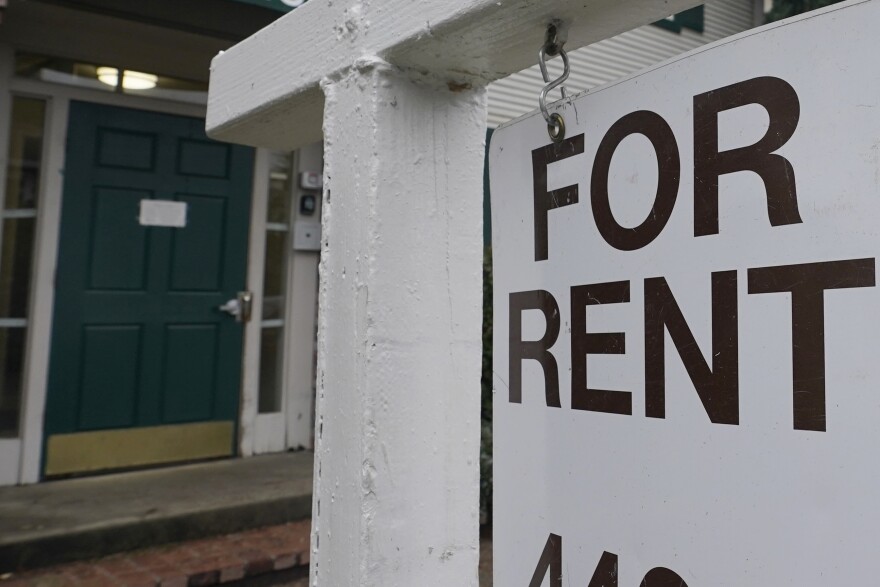About 35% of Allegheny County households who have applied for pandemic emergency rental assistance have received at least one payment.
Nationally, the pace of funds being distributed by state and local governments remains sluggish; roughly 11 percent of more than billions in aid has been given out, according to figures released by the federal government earlier last week.
More than 14,000 Allegheny County households have applied for aid and the county has distributed more than $27 million since the program started in March.
A moratorium that prevented many evictions has ended following a U.S. Supreme Court ruling on Thursday, though a local eviction moratorium for evictions over nonpayment of rent is in place until the end of October.
The court’s order aims to allow more time for applications for rental assistance to be processed to eliminate or reduce preventable evictions.
The pace of aid being given out locally has accelerated since earlier months, said Chuck Keenan, who is overseeing the rental assistance program at the Allegheny County Department of Human Services.
The biggest bottlenecks have been income and lease verification, Keenan said. These have been compounded by technology problems, such as issues like people not being able to upload lease documents.
“The document can't be more than 90 days old that we're using,” Keenan said. “A lot of people get their Social Security award letters in January. So, if that's what's proving their Social Security income, if they applied in March or April that that letter is too old to use already. So, they have to either get a new one or we have to get a second document from them that basically certifies that this is the current income … Pay stubs are the same way. We need eight weeks, two months, worth of pay stubs all in a row that have to be concurrent. …. It sounds easy, but the documentation requirements are fairly strict in what we have to use, and how we look at them. So, you know, we often have to go back to people and ask for additional information.”
He said the program has tried to work around those issues by using other means to verify income, such as checking a state database if someone is receiving public benefits. The program has also taken steps like getting leases from landlords and letting people use drop-in centers to upload documents. Applicants can also self-attest to their income in some cases.
Nationwide, officials from the U.S. Department of the Treasury said the amount of aid getting to tenants and landlords is increasing, and they have announced steps they said will help remove processing delays.
“After September, programs that are unwilling or unable to deliver assistance quickly will be at risk of having their rental assistance funding reallocated to effective programs in other high-need areas,” Treasury officials said in a statement.
Document-processing delays remain the biggest hurdle in most areas, federal officials said.
“Hundreds of thousands of applications are in the pipeline beyond those that have already been paid,” they said.
Programs are supposed to have 65% of their funds allocated by the end of September.
Last week, four Democratic state Senators, including Sen. Jay Costa of Forest Hills, said they intend to introduce legislation that would protect tenants from eviction and homeowners from foreclosures.
Their bill would require landlords seeking to evict tenants for nonpayment to apply for Emergency Rental Assistance funds. It would also require courts to grant a continuance of 60 days until the application for rental assistance is approved or denied.
“Pennsylvania itself received more than $500 million in Emergency Rental Assistance Funds, and much of it remains untouched. The Pennsylvania Housing Finance Agency is also set to administer $350 million in federal funds allocated to help struggling homeowners,” the four wrote in a memo to their colleagues seeking co-sponsors for their bill. “The money is there. We can ensure that tenants and homeowners stay housed at no additional expense to landlords and mortgage companies.”
State officials said Friday $218.5 million has been distributed to more than 50,300 households in Pennsylvania as of July 31.
In Allegheny County, you could be eligible for rental assistance if you have at least one person in your household who qualifies for unemployment, has lost income, or suffered financially due to COVID-19; have at least one person in your home at risk of experiencing homelessness if they don’t get help; and meet certain income guidelines. Funds can be used for utility aid as well.
To apply for aid if you live in Allegheny County, visit https://covidrentrelief.alleghenycounty.us/ or call ACTION-Housing at 412-248-0021.
If you live outside of Allegheny County, https://www.compass.state.pa.us/





